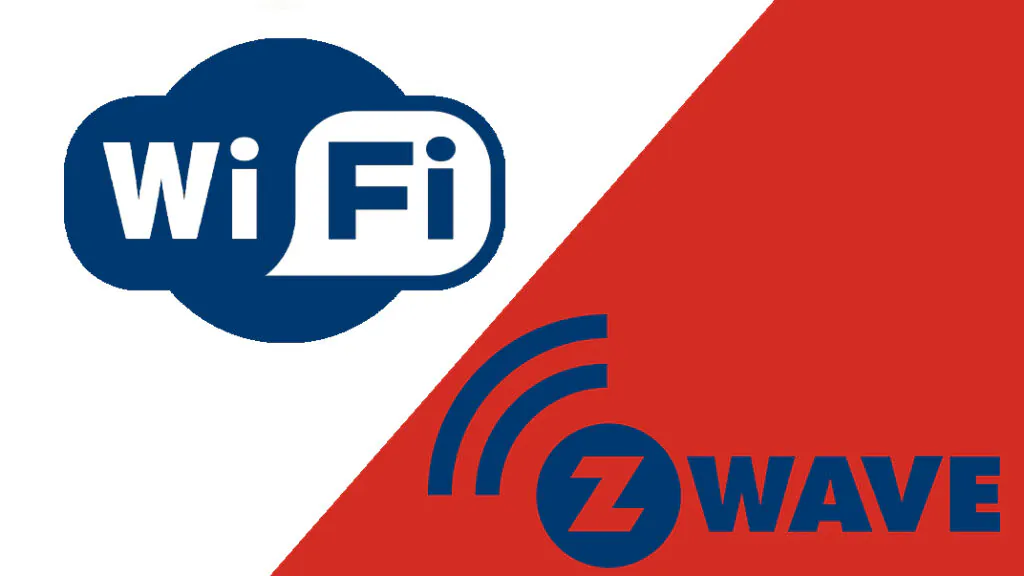Z-Wave vs WiFi: Unleashing the Ultimate Wireless Showdown

In the realm of wireless technology, two names often surface in conversations – Z-Wave vs WiFi. As we delve into the digital age, the importance of understanding these technologies cannot be overstated. This comprehensive guide will illuminate the key aspects of WiFi and ZWave, providing you with the knowledge to make informed decisions about your wireless tech needs.
Table of Contents
What is WiFi?
WiFi, short for Wireless Fidelity, is a wireless networking technology that uses radio waves to provide high-speed internet and network connections. The term WiFi is often used to refer to the 802.11 family of standards, which are set by the Institute of Electrical and Electronics Engineers (IEEE). These standards define the specifics of how devices communicate wirelessly.
The Genesis of WiFi
The birth of WiFi can be traced back to 1997 when the first version of the 802.11 protocol was created. However, it wasn’t until 1999 that WiFi really started to take off with the formation of the WiFi Alliance, a trade association that tests and certifies WiFi products for conformity to the 802.11 standards.
Over the years, WiFi has seen numerous updates and improvements. These include the introduction of new versions like 802.11a, 802.11b, 802.11g, 802.11n (also known as WiFi 4), 802.11ac (WiFi 5), and the latest 802.11ax (WiFi 6 and WiFi 6E), each offering better performance, range, and capacity.
WiFi in Action
WiFi operates by transmitting data via radio waves, with a router serving as the hub of the network. Devices that are equipped with a WiFi adapter, such as smartphones, laptops, and smart home devices, can connect to this network to access the internet or communicate with other devices on the network.
The applications of WiFi are vast and varied. It’s used in homes and businesses alike to provide internet access, enabling everything from web browsing and email to streaming video and online gaming. WiFi is also a key component in many smart home setups, allowing various devices to communicate and work together.
WiFi’s omnipresence in our daily lives is a testament to its versatility and reliability. As the technology continues to evolve, it’s likely that WiFi will play an even more integral role in our digital lives.
What is ZWave?
ZWave is a wireless communication protocol specifically designed for home automation. It allows smart devices within your home to communicate with each other, creating an integrated smart home system. ZWave operates on low-energy radio waves, making it an energy-efficient choice for smart home setups.
The Birth of ZWave
ZWave was developed by a Danish company named Zensys in 2001. The goal was to create a simple yet effective wireless communication method for home automation devices. Since then, ZWave has been adopted by many manufacturers and there are now thousands of ZWave-compatible devices available on the market.
In 2005, the ZWave Alliance was formed. This is an organization of companies that create products based on ZWave technology. The Alliance ensures that all ZWave products are compatible with each other, regardless of the manufacturer.
ZWave at Work
ZWave operates on a mesh network topology. This means that each device (or ‘node’) on the network can relay signals to other devices. This not only extends the range of the network but also increases its reliability. If a signal can’t reach its destination due to an obstruction, it can be automatically rerouted via other nodes on the network.
ZWave operates at a lower frequency (around 900 MHz) compared to WiFi (2.4 GHz or 5 GHz). This lower frequency can more easily penetrate walls and other obstacles, providing better range within a home. However, the data transmission rates of ZWave are much lower than WiFi, making it unsuitable for high-bandwidth applications like video streaming. Instead, ZWave is ideal for tasks that require low latency and low energy, such as turning lights on and off, adjusting thermostats, or locking and unlocking doors.
WiFi vs ZWave: Technical Specifications
| Specification | WiFi | ZWave |
|---|---|---|
| Frequency | 2.4GHz and 5GHz | 908.42MHz in the US; varies in other countries |
| Range | Indoor: Up to 50m; Outdoor: Up to 150m | Indoor: Up to 30m; Outdoor: Up to 100m |
| Speed | Up to 600 Mbps (WiFi 4), 1.3 Gbps (WiFi 5), 9.6 Gbps (WiFi 6) | Up to 100kbps |
| Network Topology | Star topology | Mesh network topology |
| Max Devices | Limited by router (usually 250) | 232 devices |
| Power Consumption | High | Low |
| Interference | Can experience interference from other devices on the same frequency | Less prone to interference due to lower frequency |
| Ideal Use | High-data applications (streaming, gaming, etc.) | Low-latency tasks in home automation |
This table provides a more detailed comparison of WiFi and ZWave, covering aspects like frequency, range, speed, network topology, maximum number of devices, power consumption, interference, and ideal use cases. It’s important to note that the specifications can vary based on the specific versions of WiFi and ZWave being used, as well as other factors like the environment and the specific devices being used.
WiFi vs ZWave: Compatibility

When it comes to compatibility, WiFi and ZWave each have their strengths and considerations.
WiFi Compatibility
WiFi’s universal compatibility is one of its greatest strengths. Almost all modern digital devices, from laptops and smartphones to smart TVs and home appliances, come equipped with WiFi capabilities. This means that they can connect to a WiFi network without the need for any additional hardware or adapters.
Furthermore, WiFi operates on a global standard, meaning that a WiFi device from any part of the world can connect to a WiFi network in any other part of the world. This makes WiFi a highly versatile and convenient option for wireless connectivity.
ZWave Compatibility
ZWave, on the other hand, is a more specialized technology. It’s primarily used in the realm of home automation and smart homes. Devices that are ZWave-compatible include things like smart lights, smart locks, thermostats, and security sensors.
Unlike WiFi, ZWave devices require a ZWave hub to connect and communicate with each other. This hub serves as the central point of the ZWave network, and all commands and communications pass through it.
One of the key benefits of ZWave is that all ZWave devices are compatible with each other, regardless of the manufacturer. This is due to the efforts of the ZWave Alliance, which ensures that all ZWave products can work together seamlessly. This means that you can mix and match devices from different manufacturers in your smart home setup.
However, it’s important to note that ZWave operates on different frequencies in different regions due to regulatory requirements. This means that a ZWave device purchased in one country may not work with a ZWave network in another country.
WiFi vs Z Wave: Security

In the digital age, security is a paramount concern, especially when it comes to wireless communication. Both WiFi and ZWave have robust security measures in place, but they approach security in different ways.
WiFi Security
WiFi networks can be secured using a variety of encryption methods. The most common method is Wi-Fi Protected Access (WPA), with the latest version being WPA3. WPA3 provides robust security, including stronger encryption and individualized data encryption, which encrypts the connection between each device on the network and the router.
However, WiFi networks can be vulnerable to various types of attacks. For example, if a WiFi network’s password is weak or shared among many people, it can be easier for unauthorized users to gain access. Additionally, WiFi networks can be susceptible to attacks such as Man-in-the-Middle (MitM), where an attacker intercepts communication between two parties.
ZWave Security
ZWave also takes security seriously. ZWave devices use AES 128-bit symmetric encryption for all communication, which is the same level of security used by major banks for online transactions.
In addition, the latest ZWave protocol, ZWave S2, introduces new security features. These include ECDH public-key cryptography to prevent eavesdropping and man-in-the-middle attacks, and new pairing procedures to ensure that only authorized devices can join the network.
However, like WiFi, ZWave is not immune to potential security vulnerabilities. For example, if a malicious actor were to gain physical access to a ZWave device, they could potentially exploit it to gain access to the network.
In conclusion, both WiFi and ZWave offer robust security features, but they also have potential vulnerabilities. The key to maintaining a secure network is to follow best practices, such as regularly updating your devices and software, using strong, unique passwords, and being mindful of who has access to your network.
ZWave vs WiFi: Cost

The cost of setting up and maintaining a WiFi or ZWave network can vary significantly based on a number of factors, including the size of the network, the specific devices used, and the intended use cases.
WiFi Cost
The cost of setting up a WiFi network is generally quite affordable. Most homes and businesses already have a WiFi network in place, as the only essential hardware required is a WiFi router, which is often provided by the internet service provider.
For those starting from scratch, a good quality WiFi router can range from $50 to several hundred dollars, depending on the features and performance level. Additionally, since most modern devices (like smartphones, laptops, and smart TVs) come with built-in WiFi capabilities, there are typically no additional costs to connect these devices to the network.
However, for larger homes or businesses, additional hardware like WiFi extenders or mesh WiFi systems may be needed to ensure good coverage throughout the premises. These can add to the overall cost.
ZWave Cost
Setting up a ZWave network can be more expensive. First, you’ll need a ZWave hub, which can cost anywhere from $50 to $200. Then, you’ll need ZWave-compatible devices. While the cost of these devices can vary widely based on their features and capabilities, they are generally more expensive than their non-ZWave counterparts due to the specialized technology involved.
For example, a ZWave-compatible smart light bulb or smart plug can cost $30 to $50, while a ZWave-compatible smart lock or thermostat can cost $100 to $200 or more. If you’re planning to automate a large number of devices in your home, these costs can add up quickly.
In conclusion, while a WiFi network might be cheaper to set up initially, a ZWave network could offer more specialized features and capabilities, particularly for home automation. As always, the best choice will depend on your specific needs, budget, and circumstances.
WiFi vs ZWave: Use Cases

WiFi and ZWave are both powerful wireless technologies, but they excel in different scenarios. Understanding these use cases can help you decide which technology is the best fit for your needs.
WiFi Use Cases
WiFi is a versatile technology that can handle a wide range of tasks. It’s ideal for high-bandwidth applications, such as:
- Internet Browsing and Email: WiFi provides the speed and capacity needed for web browsing and email, which are fundamental tasks for most internet users.
- Streaming: Whether it’s video (like Netflix or YouTube), audio (like Spotify or podcasts), or gaming, WiFi can handle the high data rates required for smooth streaming.
- File Transfer: Transferring files between devices on a network, or uploading and downloading files to and from the internet, is quick and easy with WiFi.
- Video Calls: Services like Zoom, Skype, and FaceTime require a stable and fast internet connection, which WiFi can provide.
ZWave Use Cases
ZWave, on the other hand, is designed for low-latency, low-energy tasks, making it perfect for home automation. Here are some common use cases:
- Lighting Control: With ZWave, you can control your home’s lighting from your smartphone, or automate it based on time of day, occupancy, or other factors.
- Security Systems: ZWave can connect security cameras, door/window sensors, motion detectors, and alarms to create a comprehensive home security system.
- Climate Control: Smart thermostats and air conditioners can use ZWave to automate temperature control, improving comfort and energy efficiency.
- Smart Locks: With ZWave, you can lock and unlock your doors remotely, or automate them to lock at a certain time or when everyone leaves the house.
Future of Wireless Technology

The future of wireless technology is incredibly exciting, with both WiFi and ZWave poised to offer faster, more secure, and more efficient wireless communication.
The Future of WiFi
The latest standard in WiFi technology, WiFi 6 (also known as 802.11ax), is already starting to make its way into homes and businesses. WiFi 6 offers several improvements over previous generations, including faster speeds, lower latency, and better performance in crowded environments. It also introduces new features like OFDMA (Orthogonal Frequency Division Multiple Access), which allows multiple devices to transmit data simultaneously, improving efficiency and capacity.
Looking further ahead, the next generation of WiFi, known as WiFi 7 (or 802.11be), is already in development. While it’s still a few years away from commercial availability, WiFi 7 promises to deliver even faster speeds, lower latency, and new features to improve reliability and performance.
The Future of ZWave
ZWave is also continuing to evolve. The latest iteration, known as ZWave Plus V2 (or 700 series), offers several improvements over previous versions. These include longer range, lower power consumption, and higher data rates. It also introduces new features like SmartStart, which simplifies the process of adding new devices to a ZWave network, and S2 security, which provides advanced encryption and security features.
In addition, the ZWave Alliance has recently announced plans to open up the ZWave specification, making it easier for other companies to develop and manufacture ZWave-compatible devices. This could lead to a wider range of ZWave products and potentially lower prices.
In conclusion, the future of wireless technology looks bright, with both WiFi and ZWave set to offer more advanced and capable solutions for our connectivity needs. As these technologies continue to evolve, we can expect to see new applications and use cases emerge, further transforming the way we live and work.
Conclusion
The WiFi vs ZWave debate is not about declaring a definitive winner, but rather about understanding the strengths and applications of each technology. Both WiFi and ZWave have carved out their own niches in the world of wireless technology, and they each excel in their respective domains.
WiFi, with its high-speed data transfer and universal compatibility, has become the backbone of internet connectivity in homes and businesses around the world. It’s ideal for high-bandwidth applications like streaming, web browsing, and file transfer.
ZWave, on the other hand, shines in the realm of home automation. Its low-energy profile, mesh network topology, and dedicated ecosystem make it a powerful tool for creating integrated and efficient smart home systems.
In the end, the choice between WiFi and ZWave will depend on your specific needs, circumstances, and the tasks you want to accomplish. You might even find that a combination of both technologies is the best solution for you.
As we look to the future, it’s clear that wireless technology will continue to evolve and play an increasingly important role in our lives. With advancements like WiFi 6 and ZWave Plus V2 on the horizon, we can expect to see faster, more secure, and more efficient wireless communication in the years to come.
So, whether you’re setting up a smart home, looking for the best way to stream content, or simply trying to stay connected, the WiFi vs ZWave debate is one you’ll want to keep an eye on. As always, stay informed, stay secure, and make the choice that’s right for you.